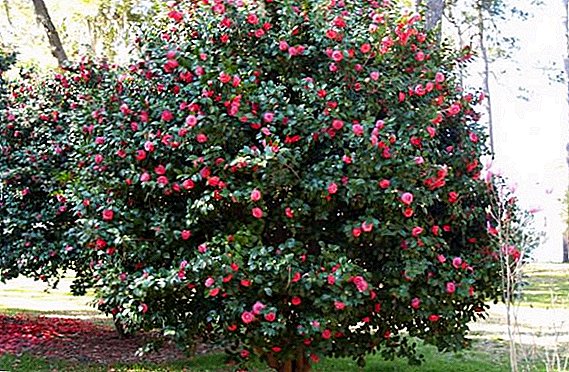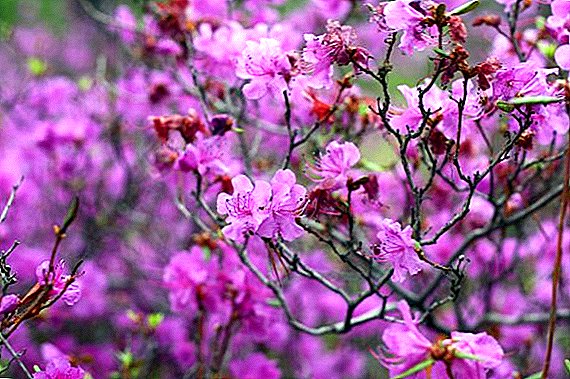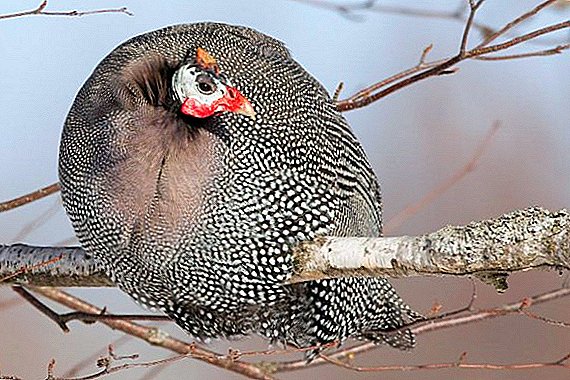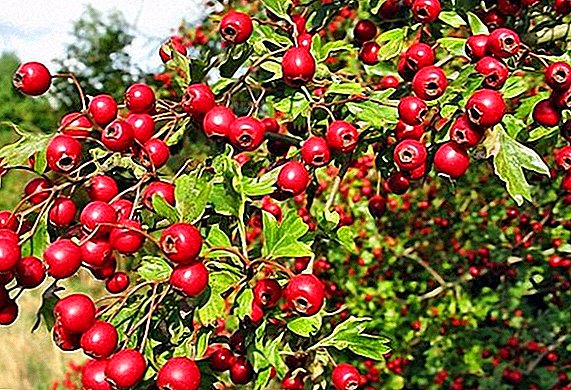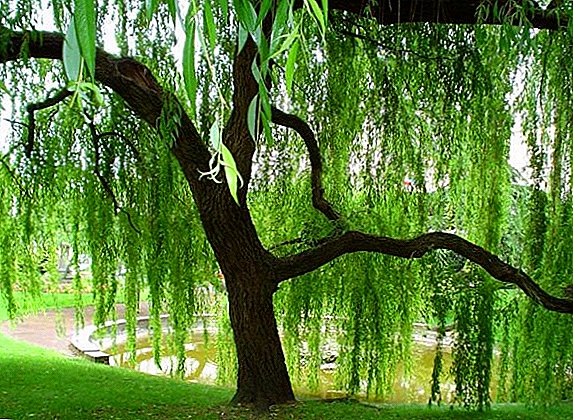 Willow - a deciduous tree or shrub, growing mainly in temperate climates. There are some species in the tropics and even beyond the Arctic Circle. Archaeologists have found prints of willow leaves on the Cretaceous sediments older than several tens of millions of years.
Willow - a deciduous tree or shrub, growing mainly in temperate climates. There are some species in the tropics and even beyond the Arctic Circle. Archaeologists have found prints of willow leaves on the Cretaceous sediments older than several tens of millions of years.
Willow has long been used as an ornamental plant, the most famous kind of willow will be considered in this article.
White willow
The white willow, or silver willow, is a powerful tree, at a mature age it reaches 25 meters in height. The tree has a magnificent crown consisting of long, softly falling stems with green, silver-casting foliage. In April, the winds bloom with yellow flowers, popularly called cats, flowers, and true, look like pieces of fur.  White willow in demand in landscape design. It grows quickly, endures a frosty climate, develops on almost any soil, painlessly tolerates a haircut. Willow is not afraid of moisture, even in excess, loves sunlight. Mature trees have a crown up to 20 meters in diameter.
White willow in demand in landscape design. It grows quickly, endures a frosty climate, develops on almost any soil, painlessly tolerates a haircut. Willow is not afraid of moisture, even in excess, loves sunlight. Mature trees have a crown up to 20 meters in diameter.  The most popular decorative forms of white willow:
The most popular decorative forms of white willow:
- Argentea is a tree with falling shoots up to 25 meters high, glossy upper side of a leaf of dark green color, lower one is whitish, during flowering the crown is literally strewn with bright yellow catkins.
- Limpde is a tree 20-40 meters tall, distinguished by the yellow color of the stems. Magnificent crown in the form of a cone about 12 meters in diameter. Honey plant, blooms in April, frost-resistant variety.
- Tristis - height up to 20 meters, with sprawling wide up to 20 meters in diameter with a crown, yellow bark and branches. Willow is a honey plant, blooms in April, almost simultaneously with the blooming of foliage.
Willow of Babylon
Babylonian Willow - a low tree up to 15 meters, with a spreading weeping crown 10 meters in diameter. The branches of willow, except for green, can have both yellow and red shades, the branches are almost bare, with glossy bark hanging down directly to the ground. The oblong-shaped green leaves on the edge have small cloves, begin to turn yellow closer to January. After the leaves bloom, the willow is covered with delicate white-yellow flowers. The willow has good winter hardiness and is not capricious in growing.
Willow Babylonian Tortuosa. It is a two-meter-high shrub, an interesting feature of the variety — twisted branches of a yellowish-golden color that look spectacular against the background of bright green foliage. This variety is afraid of cold, but quickly recovers if it freezes. To grow Tortuosis, you need a lot of light.  Willow Babylonian Crispas. This is a dwarf variety, not more than two meters in height. The shrub is decorative due to unusual foliage: leafy plates of saturated green color are twisted in the form of a flower, covered with gloss.
Willow Babylonian Crispas. This is a dwarf variety, not more than two meters in height. The shrub is decorative due to unusual foliage: leafy plates of saturated green color are twisted in the form of a flower, covered with gloss.
Iva Kanginskaya
Willow Kanginskaya is a variety of special breeding, the Latin name for willow is Salix Kangensis Nakai. The variety is represented by two varieties: tree and shrub. Both types of plants grow up to 10 meters high. The leaves differ in size from each other: sprout stems are up to 20 cm long, leaves are half as large on the fertile stems. The leaf plates are lanceolate, pubescent. Willow blooms in early spring, different lush flowering. It prefers to grow on the banks of rivers and other bodies of water, likes good lighting, winter-hardy, this willow is a honey plant. In nature, it is common in Primorsky Krai, in Korea, and in northeastern regions of China.
Did you know? The ancient Slavs honored willow as a sacred tree of life, the tree was a symbol of the god Yaryla. Followers of Buddhism believe that willow is a symbol of the spring revival of nature. Taoists called willow a symbol of manifestation of strength in weakness due to bending, but not breaking, stems. The sacred tree, near which prayers were offered to the gods, was among the ancient peoples of Mexico and the North American Indians.
Willow caspian
Variety Caspian willow grows shrub, branched shrub with a crown in the shape of a fan, long thin stems. The bark of the willow is gray-green, the leaves are glossy, bright green, elongated. The length of the leaves is 10 centimeters, the height of the bush is three meters, the crown is almost two meters in diameter. Willow blooms in May and blooms for only three days. Winter-hardy, but does not like severe frosts. In landscape design it is used to decorate artificial ponds or natural streams and ponds, its root system, growing, strengthens the coast well. 
Willow goat
Goat willow, or bredana, is a small tree with falling branches. Goat willow is absolutely unpretentious: it is not afraid of shade, moist soil, it grows on any soils, it is winter-hardy. The plant is often planted in reservoirs. Willow blooms from April to May with yellow-colored cat-flowers. The shape of the crown of goat willow is weeping. The most popular types of wood:
- Pendula goat willow is a tree with a weeping crown, silver-green leaves and golden cats. Cold-resistant, loves lighted areas, grows well in partial shade. Willow Pendula is not higher than two meters, the diameter of the crown - up to one and a half meters.
- Zilberglyants is a tree up to eight meters high, the stems are gently falling down, the diameter of the crown is about five meters. The tree blooms in April.
- Mac goat willow - tree or shrub, tree height - up to 10 meters, diameter of a spreading crown - up to six meters. In the lower part of the trunk, the bark in small cracks, above becomes smooth, gray-green. Beautiful bluish-green leaves have a pleasant aroma.

Interesting! People say that willow heart dies first: it rots from the core of the trunk. Interestingly, because of this, it was considered that if a child was carved with a wicker, it would not grow, and at that time it was wounded from willow for disobedience. Apparently, therefore, in antiquity there were more low people.
Willow fragile
The willow is fragile, a willow, as it is also called, - an average-sized tree (up to 20 meters) or a shrub. Her crown in the form of a tent, the stems are not very flexible, breaking, which gave rise to the name of the willow. Stems are not pubescent, green, glossy, sticky at the beginning of the development of the plant. The leaves are large, 15 cm long, of a lanceolate form, with a serrate edge, a sharp tip. The tree blooms when the leaves bloom - in May-April, with long yellow-green earrings.  The willow variety Bullata is well known and popular. He has a spherical, gently rounded crown. The structure and development of the tree is a bit like a jellyfish. The sphere of the crown consists of branching stems located domed, and below growing up the shoots support this dome. Foliage grows so tightly that the tree seems covered with a green velvet cape.
The willow variety Bullata is well known and popular. He has a spherical, gently rounded crown. The structure and development of the tree is a bit like a jellyfish. The sphere of the crown consists of branching stems located domed, and below growing up the shoots support this dome. Foliage grows so tightly that the tree seems covered with a green velvet cape.
Iva Matsuda
This tree in its natural habitat lives in Korea and China. The tree grows up to 13 meters tall, it has a slender, straight trunk, a crown in the shape of a pyramid. The long, thin, ascending stalks at a young age are fleecy, painted in olive color with a yellowish sheen. Casting narrow, elongated to 10 cm in length. Together with the blooming of the leaves, fluffy earrings are blossoming. Yves Matsuda loves good lighting, heat, does not tolerate temperature changes, grows on nutrient soils. 
Important! Most varieties and species of willow grow quickly, so they need regular pruning, if this is not done, the tree or shrub will grow in a shapeless mass. Shave begin a tree or shrub, reached 80 cm in height.
Norway willow
Norway willow has many names - the sheluga is red, reddish, willow. This tree or tall shrub with a reddish shade of branches, as reflected in the name. In addition to color, the stems are wax coated on the bark. It occurs in nature in the regions of Ciscaucasia, throughout the European part of Russia. It grows in the forest-tundra, on sandstones and near reservoirs. The willow grows up to 10 meters tall, its crown is spreading, oval-shaped, the leaves are long and narrow, dark green, the leaf stalks are red-yellow at the leaf plates. Blooms before the leaves bloom. In the landscape it is used in landings near water bodies, in parks, as a hedge. Among people, cat willow catkins are used in the religious rite on Palm Sunday. Willow twigs are used to make furniture, baskets and other household utensils.  The most decorative form of willow is Tatar willow. This plant with a weeping crown in the period of flowering is covered with white earrings.
The most decorative form of willow is Tatar willow. This plant with a weeping crown in the period of flowering is covered with white earrings.
Attention! If you grow eared or fragile willow, please note - in the heat, provided there is no pond near the tree, it should be frequently watered and sprayed. Willow white to drought more resistant.
Willow creeping
Armando's creeping willow is a standard grade, low shrub, with thin, flexible stems. The bush has a wide crown up to three meters in diameter, the height of the bush is not more than a meter. The foliage is matte, the upper part of the leaf is green, the lower one is greyish, pubescent. Blooming fluffy gray-pink earrings. Willow is resistant to low temperatures, likes good lighting and moisture. This variety can be grown in room conditions in the tub. On the site it is used in the design of stone gardens, decoration of hills, rockeries, ponds. 
Willow
Willow, or hemp willow, inhabits most of Russia and the Baltic states. She loves the banks of rivers, forests and forest-steppe. This is a tall shrub up to eight meters, with a spreading crown, long shoots, twigs, covered with nap, as the pile grows, it disappears. The leaves are long and narrow with a curved edge, the bottom plate with a nap. The second name willow received for the shape and location of the leaves: they look like cannabis leaves. The willow blooms before the leaves bloom, it has long earrings (6 cm) in the shape of a cylinder, it blooms for only two weeks.  This type of willow is well suited for weaving baskets, hedges. The bush grows quickly, tolerates frost well, is not picky about the soil and conditions.
This type of willow is well suited for weaving baskets, hedges. The bush grows quickly, tolerates frost well, is not picky about the soil and conditions.
Purple willow
This type of willow is unusual because of the red color of the stems. This is a shrub with a crown in the shape of a ball, thin and long shoots and silver-green leaves. The bush grows to five meters in height, the crown in diameter is also about five meters. Purple willow blooms in May; flowers have a purple hue.
- Variety Lighthouse. Ornamental shrub with pink branches, resistant to low temperatures. Prefers lit areas and moderate humidity. The height of the bush - three meters, the same diameter and a spherical crown.
- Variety Nana. Shrub, growing not more than one and a half meters, luxuriantly blooming, not capricious to the soil and growing conditions. Resistant to frost. But from the strong wind to cover. The bush has a rounded crown shape and brownish shoots, blooms with greenish flowers.
- Pendula. The shrub is not more than three meters tall, the crown is lush, weeping, the foliage is green with a blue tint, the flowers are the color of purpura. Frost-resistant, moisture-loving, light-loving, can not suffer drought. Looks good and grows near water.

Rosemary willow
Rosemary willow is also called Siberian willow, netala and nicelosis. This is a meter-long shrub with a voluminous crown, purple shoots. The bush has fluffy leaves, dark green above and gray below. Willow blooms with yellow or red earrings in May, earrings have a delicate fragrance. The variety is frost-resistant and unpretentious growing, it grows slowly, on any soil. 
Willow eared
Willow eared - shrub up to two meters tall. It has long, curving, horizontally growing stems. The leaves of the willow are egg-shaped, tapering towards the petiole, wider towards the edge. The upper part of the leaf is pale green, the lower part is of a blue tint, the sheet plate is covered with a soft nap. The variety is resistant to low temperatures and winds. 
Willow
The willow is a three-meter shrub, the trunk at the base of the bush is curved. Stems of willow on the location on the trunk resemble a fern, they depart from the trunk of an inclined arc. The leaves are narrow, oval, pale green. Blossoms in May purple earrings with a delicate aroma of blooming hyacinths. Winter-hardy and disease resistant.  The most famous variety is Hakuro-nishiki. This is a low tree up to two meters in height with the same diameter of the crown. The shape of the crown is spherical, interesting foliage coloring: white, pink, green. Blooms in April with yellow flowers. Loves lighted places and wet soils.
The most famous variety is Hakuro-nishiki. This is a low tree up to two meters in height with the same diameter of the crown. The shape of the crown is spherical, interesting foliage coloring: white, pink, green. Blooms in April with yellow flowers. Loves lighted places and wet soils.
Willow - quite a decent response to exotic ornamental plants, often planted in areas. This plant has a no less spectacular view, moreover, it is familiar to our climate and less whimsical than foreign guests.




